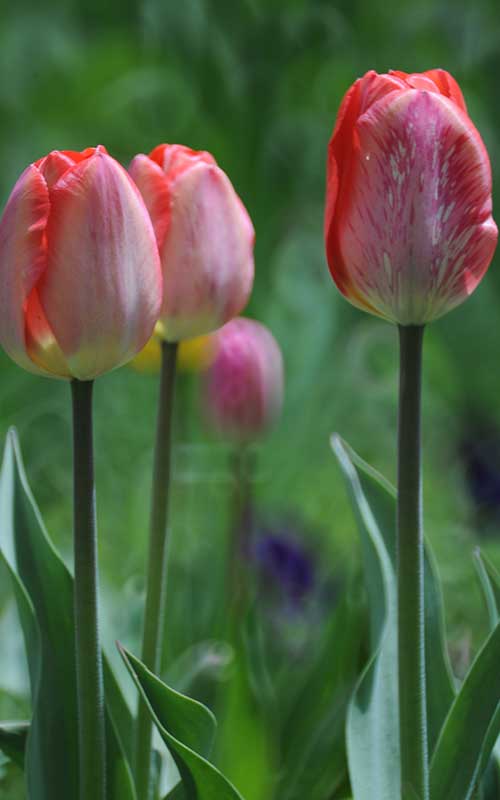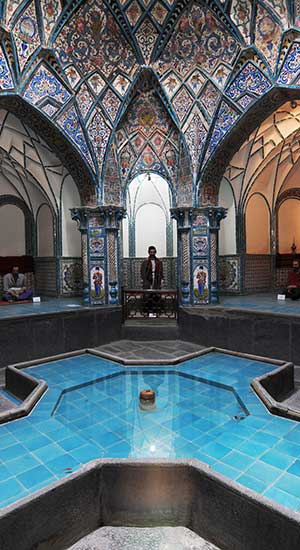
History
In the first millennium BC, all of the center and western regions of contemporary Iran were a part of the Median Empire, which also included the Markazi Province. On the Iranian plateau, the area is regarded as one of the oldest settlements. The location is quite old, as evidenced by the numerous ruins that are still there.
Jibal or Kuhestan became the name of the region during the early years of Islam. Khorheh, Tafresh, and Khomein were the most well-known cities in Jibal Province by the early 10th century.
Iran's Markazi province has an area of 29,406 km2 (11,354 sq mi), with Arak serving as its capital. The province was divided into the current Markazi and Tehran Provinces in the 1980s when its current boundaries were established.
The province's capital, Arak, is located 295 kilometers from Tehran. One of the nation's industrial hubs in this city. This city is traversed by the Tehran-Khuzestan railroad. During the rule of Fathali Shah Qajar, the city of Arak was founded. Originally known as "Ghaleh Soltan Abad," the name of this city was changed to "Arak" later in the 20th century.
Arak has had several modifications since it was founded. Arak was a military city and the headquarters for generals up to the early 20th century. But with time, the city's military importance diminished and it gradually transitioned into a commercial and industrial hub. After the start of World War I and the Qajar dynasty's purges, Russian soldiers invaded Saveh, Soltan Abad, and the surrounding areas. When the First World War and the nation's political upheavals concluded.
Climate and weather
The Alborz and Zagros faults' meeting point and the region's center desert serve as its boundaries. The province includes a variety of climates, including semi-desert, cold mountainous, mild mountainous, and desert. Markazi Province has a generally mild climate, with cool summers and icy winters.
The yearly rainfall in mountains is 370 millimeters on average. In the winter, when temperatures dip below -5 degrees Celsius, the mountains are constantly blanketed in snow.
When to Go to Markazi?
The province of Markazi is accessible throughout the year, notably in the spring and fall. But during the summer, it is not advised.
Recommended month for traveling to Markazi Province
APRIL

Where to Go in Markazi?
Markazi province is one of the industrial provinces of the country, which is known as the industrial capital of Iran. Markazi has 12 beautiful cities. The area of this province is about 29,530 square kilometers.
Arak
Arak is the capital of Markazi Province, which was called Sultanabad Castle in the past. This city is the 18th most populated city in Iran and has significant tourist attractions. Arak has cold and wet weather in winter and hot and dry weather in summer. The sights of this city are:
Mahalat
This city is located in the southeast of Arak and is connected with big cities from four directions. Mahalat is one of the cities that has very clean air, and for this reason, it has received nicknames such as the Netherlands of Iran, the city of flowers, and the legendary paradise. This city has taken first place in the country in flower production.
Sepahdari School and Mosque
This historical and religious building was built in the period of Feth Ali Shah Qajar and is located in the center of Arak. This place is the first religious science center in the city.
Masrup Church
In 1914, the Armenians living in Arak built the holy Masrup Church in this city. In the context of this church, there is a meeting hall, a special school for Armenians, and a priest's house.
Ateshkoh Fire Temple
The building of Ateshkoh Fire Temple was built in the Sasanian period. This place is located in Ateshkoh Nimvar village. This building is divided into three parts: the western hall, the corridor, and the eastern hall.
Hot springs
In addition to the spectacular flowers and plants that the area grows, it has many hot springs that have healing properties. 15 kilometers east of Mahalat, there are a series of hot springs named Shafa, Soleimanieh, Denbeh, Soda, Rheumatism, and Hakim.
Sarcheshme Park
This park, which is located in the center of the neighborhood, is considered one of the most beautiful attractions of the neighborhood due to its fountain and towering trees. In summer when the weather is hot, people come to this park for fun.
Dilijan
In the past, this city had other names such as Delirgan, Delirjan, and Deligan. Dilijan has a semi-arid climate most of its winters are cold and its summers are relatively hot
Jaseb
This region has different villages, each of which has its unique beauty. This area is a wonderful plant and animal habitat. Among the plants that grow in this area, we can mention the barberry, mountain almond, etc., and the animals that can live in this area include sheep, deer, leopard, wolf, etc.
Imamzadeh Suleiman
The blessed tomb of Imamzadeh Suleiman is located in Dodhak village of Dilijan city. The building of this tomb is very old and was built in the Safavid period.
Mes Sar Mosque
One of the oldest buildings in Dilijan is Mes Sar Mosque, which attracts many tourists. One of the reasons for naming this mosque after Mes Sar is that this mosque had a copper dome in the past and another reason for this name is that this building is one of the tallest buildings in Dilijan and the people of Dilijan call it large objects Mes Sar.
Khomein
Khomein is one of the cities of Central Province and it was the birthplace of the supreme leader of the revolution, Seyyed Ruhollah Khomeini. This city is located in the south of the Markazi province.
Historical complex of Beit Imam
Imam Khomeini's father's house, which was built in the Qajar period, with an area of about 2500 square meters, has now become a place for public visits.
Imamzade Abu Talib
The mausoleum of Imamzade Abu Talib was built during the Safavid period. The people of Khomein also know this place as the tomb of Prince Abu Talib.
Nimur Historical refrigerator
To see this glacier, you need to travel to the city of Nimur. This refrigerator is no longer functional, but because of its solid body, it has remained in its conical shape. In the past, this Building was built because it was close to rivers or running water. This valuable building was registered as a national monument in 2005.
Saveh
The history of this city dates back to the Sassanid period and today it is known as the second-largest city in the Markazi province.
Saveh Jame Mosque
Saveh Jame Mosque is one of the most important religious places in this city, which has unique architecture. This building was built and completed in the three periods of the Sassanids, the rise of Islam, and the Safavid period.
Imamzade Seyyed Ishaq
In the east of Saveh city, there is a building known as Imamzadeh Sayyed Ishaq. The construction history of this building dates back to the Seljuk and Safavid eras.
Four Seasons Bath
This bath belongs to the late Qajar period and was registered as a national monument in 1355 AH. The four seasons of the year are painted on the square of this bath, and this is the reason why this bath is named the Four Seasons Bath.

Top Dishes in Markazi
The Markazi province has a relatively cold climate, and therefore the traditional foods of this region of Iran are mostly in the form of soups and hot dishes. Using the healthy cooking method is one of the main features of Arak's local cuisine, which shows that the people of this province have been paying attention to their food health for a long time and have tried to prepare healthy and nutritious foods.
Dogole dodar
Dogh soup is one of the traditional dishes of Arak and Lorestan province, which is known as "Dogole Dodar" in Arak and "Keshk Lori" soup in Lorestan and is very popular in the cold season. The difference between this broth and normal broth is that it does not contain potatoes, lemon, or tomato paste, instead, the curd is poured into it, and in some regions, white beetroot is added to it.
Gore Mast
Gore Yogurt is a very simple and healthy food that main ingredient is milk. Since fresh milk is found in the villages of the Markazi province, this food is very popular in this region.
Tetali Kebab
"Te Tali" or "Tetali" is one of the local dishes of Markazi province, which is prepared in two ways, with water (abgousht) and without water (kebab), and is usually served with bread or rice and fresh vegetables. "Tal" is a type of short and wide copper dish, which in the past was used to prepare this food in the tal on the fire. Te Tali is similar to a pan grill and is one of those dishes that is rarely seen in restaurants.
Kaljosh
Kale Josh or Kalejosh is one of the traditional dishes of Markazi Province and other regions of the country such as Yazd and Khorasan provinces. This old and delicious food, which curd is considered as its main ingredient, is prepared from the combination of curd, mint, oil, walnut kernels, onion, turmeric, salt, and pepper, and it is a useful and nutritious food due to its simple and healthy process.
Tarkhineh
Dry Tarkhineh forms the main ingredient of Dogh Tarkhineh soup. To prepare it, half-pounded wheat should be cooked in local dogh, and when the water is drained, the obtained dogh should be made into different shapes and allowed to dry.
Ash Tarkhine Dogh or Ash Sirabi is one of the most common dishes of Markazi Province, which is cooked in some regions of the country, such as Lorestan and Kurdistan, as local food in the winter season.
Ash-e Halim
Ash-e Haleem is one of the special dishes of Dilijan city, the preparation method of which is different from Haleem. To cook this dish, semolina, meat, and legumes (peas, beans, and lentils) are used, which must be pounded and crushed well after cooking. Then it is placed on gentle heat so that it cooks well and becomes elastic. Finally, they pour it on bread and eat it.
Petele polo
Petele Plou is one of the traditional dishes of the Markazi province and Malair city of Hamadan, which is known by this name because of the use of petele (cooked and dried wheat).
To prepare petele, wheat is washed traditionally, then cooked and spread out, and dried in front of the sun. In the next step, it was poured into a pit and beaten with a stick to remove the skin. Next, it was half-pounded with the help of Dastas (a type of manual mill) and used in various dishes. petele polo is cooked in different ways, some people cook it with a combination of walnuts and pinto beans, and some cook it with lentils, rice, and potatoes.
Top Souvenirs of Markazi
Fatir bread
Fatir bread is prepared in different cities with different recipes and flavors and different shapes and sizes. Arak Fatir bread is well known in Iran. Fatir bread is made of flour, sugar, eggs, and other ingredients and is baked in the oven like bread.
Tarkhineh
Dry Tarkhineh is one of the souvenirs of the central province that can be found in its various cities. Dry Tarkhina is wheat or barley grits soaked in sour buttermilk. Then pieces of this paste-like mixture are balled and sometimes dried under the sun with the addition of a little dried oregano plant. Dry pieces of Tarkhineh are prepared as a soup by adding beans and dried vegetables. Tarkhineh is considered a semi-prepared food.
After being soaked in boiling water, the dry Tarekhina gradually turns into a soup. The way to make it is almost similar to today's ready-made soups.
Sarogh carpet
Sarough is located 50 kilometers north of Arak, whose hand-woven carpets are world-famous.
Arak carpets are divided into three categories: Mahal, Meshkabad, and Sarough, which are all covered by a carpet called Sarough, which shows the importance of Sarough carpets.
One of the reasons for the prosperity of Sarooq carpet is its precise weaving, which means compliance with reasonable standards in dimensions, correct knots, necessary wefts, etc., which has made customers satisfied.
Another important reason for the attractiveness of Arak carpets (Sarooq and Farahan) is the local characteristics of these carpets and their designs.
Jozghand
Naraq is a city near Dilijan city. This city is located between the cities of Qom, Kashan, and Dilijan and is one of the mountainous and cold regions of the province.
Jozgand is a local sweet of Naraq city, which takes 15 days to prepare and is known as the most expensive local Iranian sweet as a souvenir.
The making of juzgand is a group work between Naraghi women. To make this sweet, the fruit is peeled and dried in the sun for three days on the roof, then the core is removed and it remains in the sun for another day. Sugar, cardamom, apricot kernels, and sugar dust are filling. This delicious sweet has been registered in the list of spiritual works of the country.
Giveh
Senejan (in the local dialect of Senjun) is a village on the slopes of Kasbah Mountain. Weaving is the only handicraft industry in this region. In the recent past, Sanjan's Giveh (traditional shoe) has been sent to different cities and villages for sale.
Giweh is a type of authentic Iranian shoe or clogs that is used in warm and cool seasons. Now it is used only in some cities and villages. It does not have a right or left pair, and due to the use of fabric texture, the foot does not sweat in it.
According to the research, the history of the embroidery industry in the Markazi province reaches the Qajar period, and currently, the embroiderers of this province are working in the cities of Saveh, Kamijan, Mahalat, Arak, and Sanjan.
